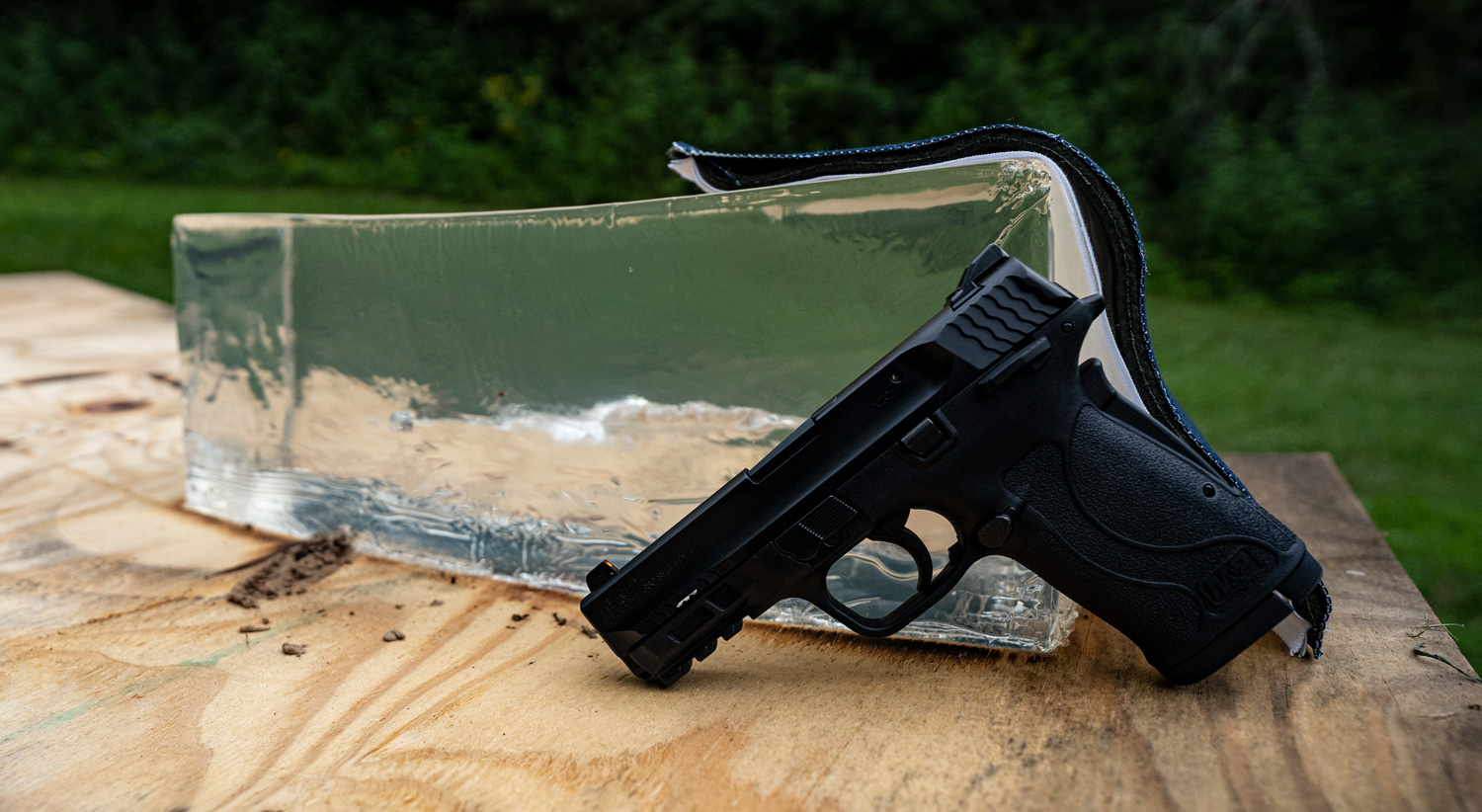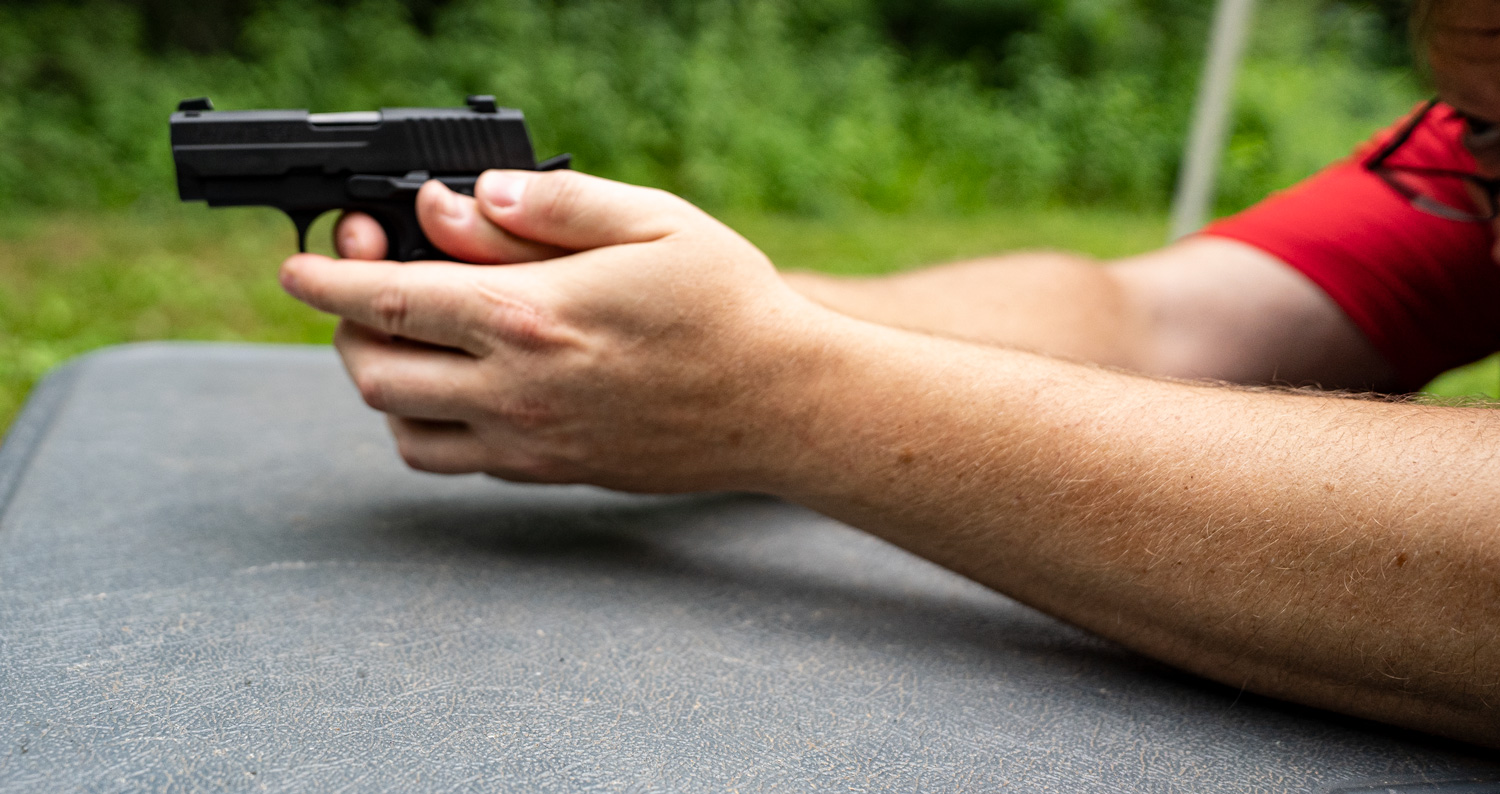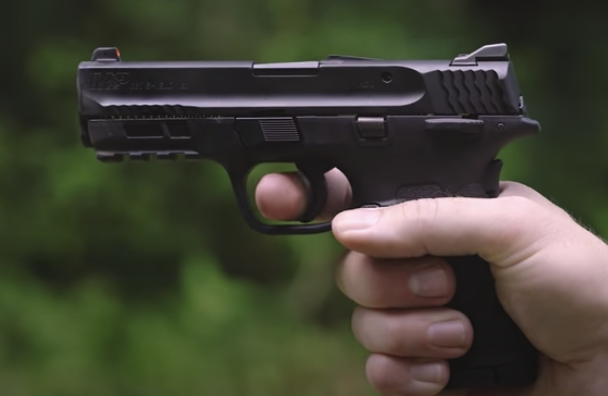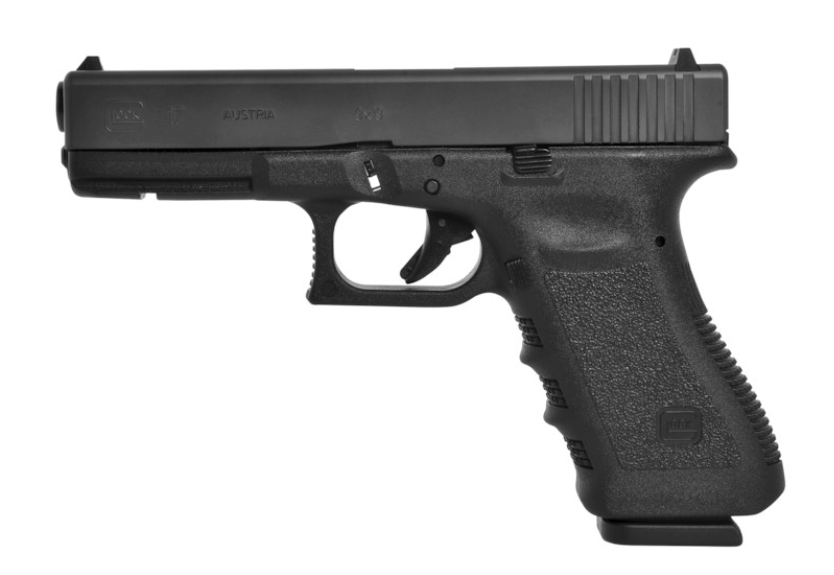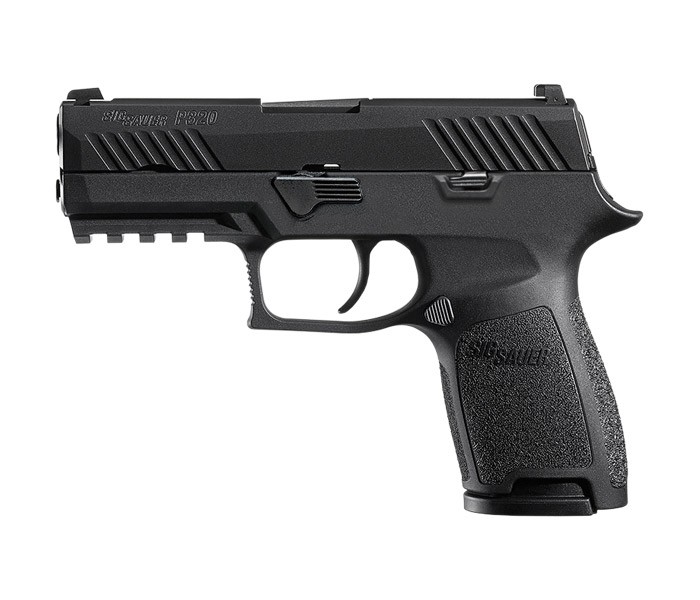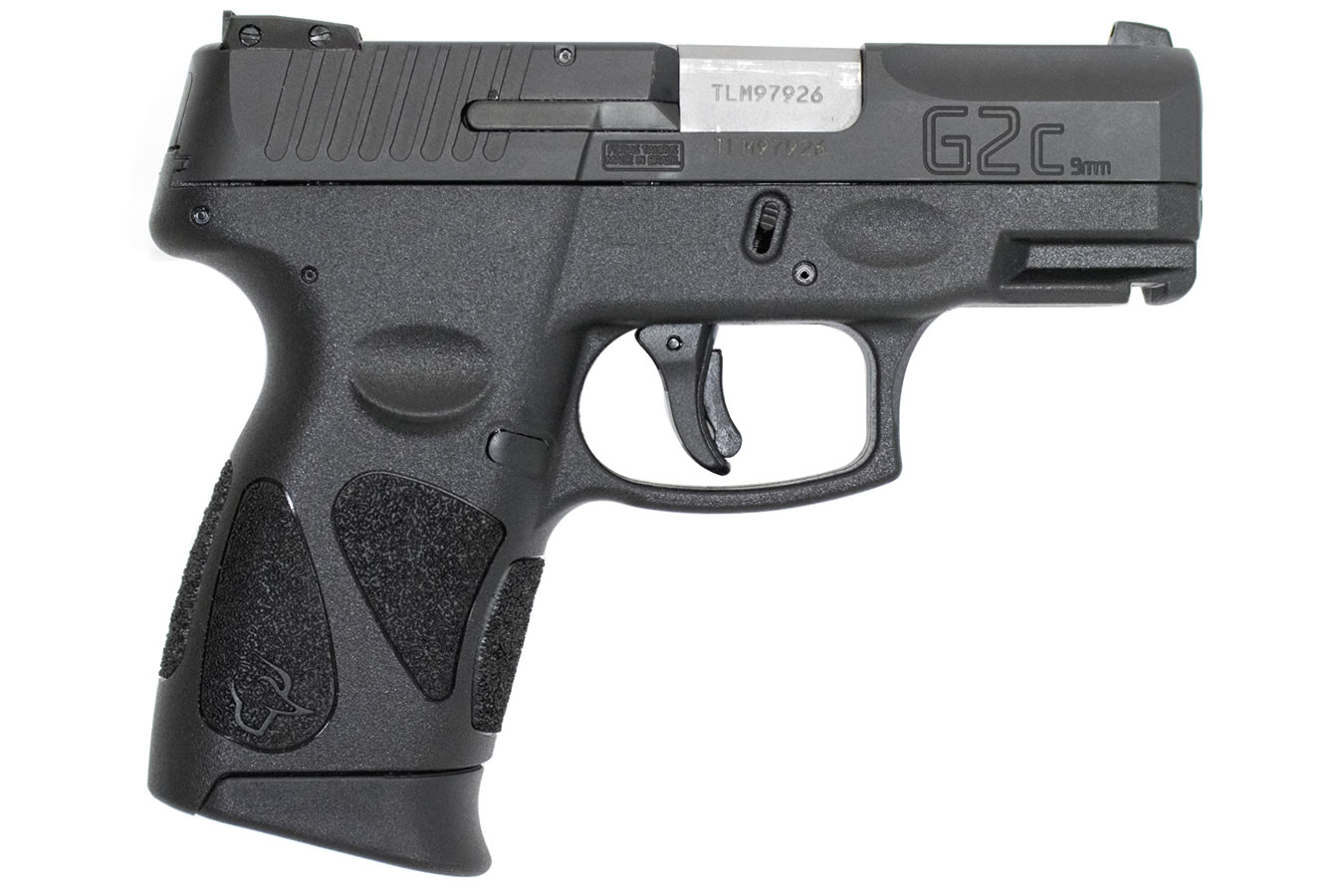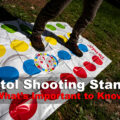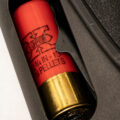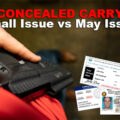What you should look for when trying to find the best first handgun to buy. We’ll take you through the traits and also give you some concrete recommendations.
Buying your first handgun can be an intimidating ordeal. There are hundreds of options available and plenty of conflicting advice on which option is best.
Choosing a handgun is an important and very personal decision. If you’ve made the decision to buy a handgun, but aren’t sure where to start, here are a few key things to consider. If you want to know what to look for, what to avoid, and how to decide which handgun is right for you, read on.
Don’t care about the “how” and just want to see our top 3 picks? Click here to jump to our specific best first pistol recommendations.
Pistol Vs. Revolver
There are two basic types of handguns – pistols and revolvers.
The ATF defines a pistol as a handgun “with a chamber that is an integral part of, or permanently aligned with, the bore.” That’s a pretty confusing definition for newbies. Basically, a pistol is any handgun that isn’t a revolver.
Most modern pistols are semi-automatics. These types of handguns use the pressure and energy generated when a cartridge is fired to eject the empty case and cycle the next round into the chamber.
Although pistols come in a variety of designs, they all offer easy and rapid reloading, particularly when compared to revolvers. Semi-autos also have the advantages of increased magazine capacity and a thinner profile.
Modern revolvers have a revolving cylinder with multiple chambers. When you cock the hammer or press the trigger, the cylinder rotates to bring the next cartridge in line with the barrel. A revolver is loaded and unloaded via the cylinder rather than a separate magazine.
Although revolvers can take some time to load (especially in unpracticed hands), they are generally more reliable than semi-automatics. Revolvers also have a simpler design that most new shooters find easier to use. Plus, it takes some serious effort to jam up a revolver.
Which one should you choose?
That depends.
Pistols tend to make a better option for concealed carry, mostly because the traditional six-shooter takes up too much space to easily conceal. Pistols also have the advantage of extra cartridge capacity, which is a valuable asset in a self-defense situation.
However, it is hard to beat the simplicity and reliability of a good old-fashioned wheel gun. These qualities alone make them ideal for the newest shooters.
Ultimately, which one is “best” depends on which you feel the most comfortable shooting.
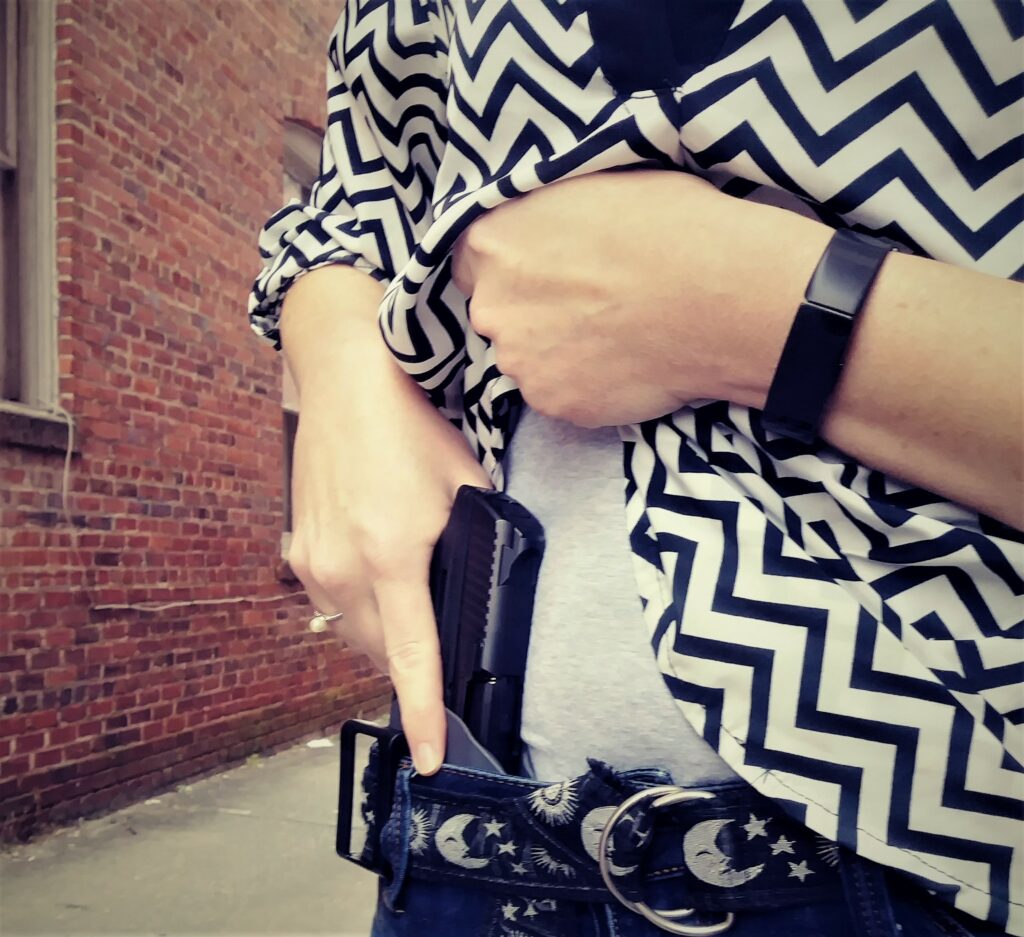
Selecting the Right Caliber
The perfect handgun caliber is one of the most controversial topics in the shooting world. Everybody has their own personal opinion on the matter, and some will argue their choice until well after the cows have come home.
However, there is no one-size-fits-all perfect caliber. So how do you choose?
Choosing the caliber of your handgun (or the exact cartridge your handgun is designed to shoot) may be a more important decision than the make and model of the handgun you choose. Caliber has a huge impact recoil. It also will influence how effectively your handgun will eliminate a threat in a defensive situation.
The “Best” Self-Defense Caliber
Self-defense projectiles effectively incapacitate through tissue damage and blood loss. Larger, more powerful calibers (like .40 S&W or .45 ACP) are more likely to accomplish this because the larger diameter of the projectile naturally creates more tissue damage. Also, a larger wound channel is more likely to hit vital organs and major arteries, increasing blood loss for quicker threat neutralization.
While some calibers are obviously more effective at creating blood loss and tissue damage than others, there is always a trade off. Large caliber handguns will definitely produce larger wounds. However, they also naturally produce more recoil. Heavy recoil can have a negative effect on shooter confidence and accuracy, especially for weaker or inexperienced shooters.
Many “experts” believe any caliber smaller than .40 is ineffective for personal protection. However, if a shooter is incapable of putting multiple rounds on target with a large caliber handgun, that weapon is relatively useless for self-defense. Ultimately, any round on target is better than a clear miss, so the most effective caliber is the one you can shoot with proficiency and confidence.
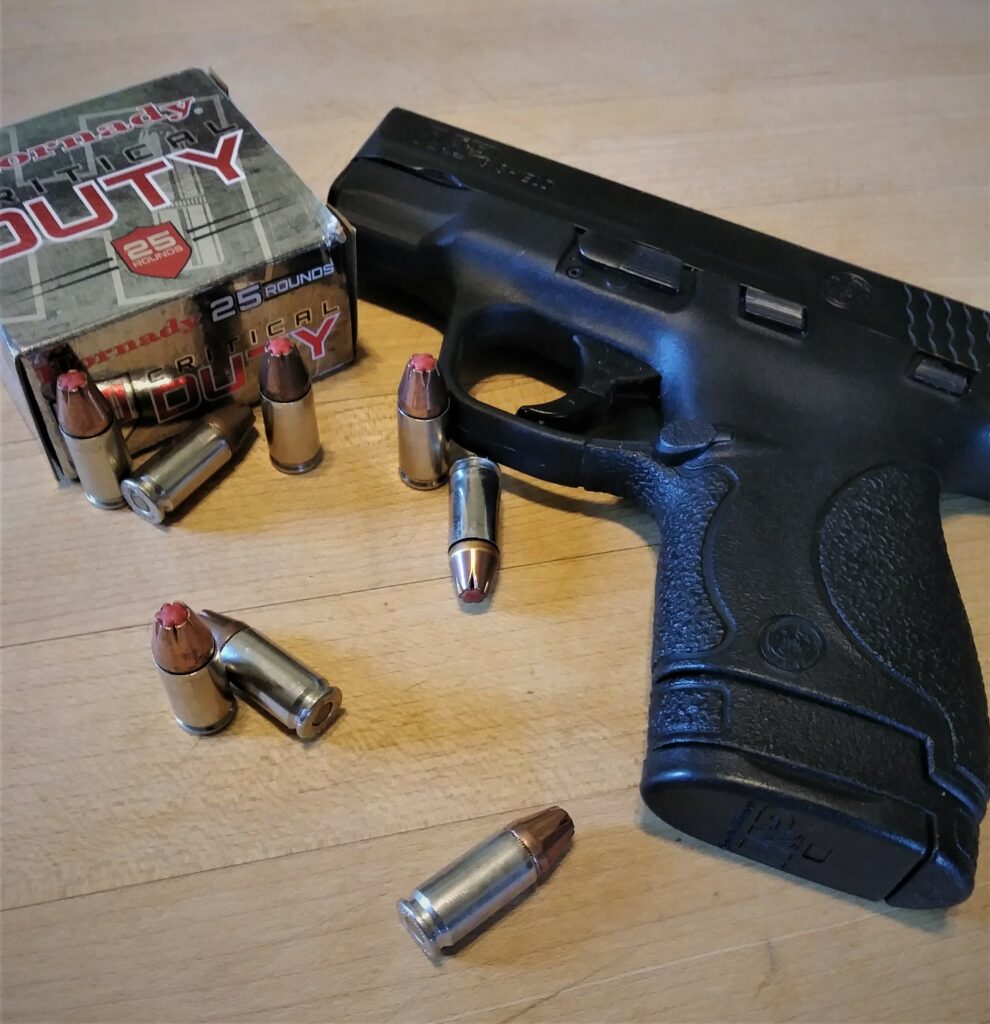
Also, with modern advancements in self-defense ammunition, smaller caliber weapons have become far more effective for personal defense than they once were. Engineered for massive expansion, impressive weight retention, and hard-hitting energy transfer, modern self-defense ammo, even when loaded in a smaller caliber handgun, can produce devastating results.
If a .22 is all you can handle effectively, it is certainly better than nothing. Be sure to load that weapon with the best self-defense rounds you can buy.
However, if you can handle a bigger round, carry the bigger round. In short, don’t be embarrassed or ashamed to carry a small caliber handgun, but carry the biggest you can shoot effectively.
Size Matters
When it comes to concealed carry, the size of the gun is an important factor to consider. However, don’t be seduced by the tiniest bantamweight models. Sure those puppies are cute, and they make concealment practically effortless, but they can be a bear to shoot.
Size affects more than concealment, and cute doesn’t mean a handgun is easier to shoot. Generally, the smaller the handgun, the less forgiving it is. This goes for aiming as well as recoil.
How Handgun Size Affects Recoil and Shootability
As a general rule, smaller lightweight handguns produce more felt recoil. This is a matter of physics. If you can remember back to high school science class, you might recall a guy named Newton and his Third Law.
“For every action, there is an equal and opposite reaction.”
For firearms, this principle breaks down like this: when you pull the trigger, the bullet and hot gases go forward (the action), while the gun goes backward (the opposite reaction).
That backward motion is recoil.
There are several factors that affect how much felt recoil a firearm produces. One of these is the mass of the firearm. All things being equal, a heavier gun will absorb more energy and therefore produce less felt recoil for the shooter. Because recoil can upset shooter confidence and target accuracy, a larger heavier handgun is typically more appropriate for less experienced shooters, especially those shooters who are weaker or recoil sensitive.
While a larger handgun could pose some problems with concealment, don’t forget concealment isn’t the ultimate goal. You need a weapon you can handle effectively, shoot accurately, and carry with confidence. The real work of the handgun must happen after it leaves its place of concealment to neutralize a threat.
Understanding Handgun Size
Generally speaking, handguns fall into one of four size categories. Some models may blur the lines and fall easily into more than one category.
Full Size Handguns
Full-size handguns generally measure 5 or more inches in height and 7 or more inches in length. The magazine capacity of a full-size pistol is typically high, with some models capable of holding close to 20 rounds.
Because larger weapons can seem more intimidating, many inexperienced shooters shy away from them. However, full-size handguns are usually easier to manipulate, and their mass helps soften recoil. These make great first guns, especially for women.
Some popular full-size models are the Glock 17, Beretta 92, Sig Sauer P226, and the Ruger SR 1911.
Compact Handguns
Slightly smaller than full-size handguns, compact pistols are often created by shortening the barrel, slide, frame length and height of their full-size counterparts. The magazine capacity is often the same as a full-size (although sometimes it may be slightly reduced). Some compact models accept full-size magazines, increasing capacity without requiring any major modifications.
Handguns in this category are somewhat easier to conceal, although some shooters still consider them problematic. However, most pistols in the compact category are still relatively easy to shoot in most calibers.
Often affectionately referred to as “Goldilocks” guns, compact handguns seem to hit the “just right” sweet spot between small enough to carry and big enough to shoot with confidence and accuracy.
Handguns that fall into this category are popular for everyday carry. If you’re new to shooting, some beginner-friendly compact pistols are the Glock 19, Smith & Wesson M&P, and the Sig Sauer P320.
Sub-Compact Handguns
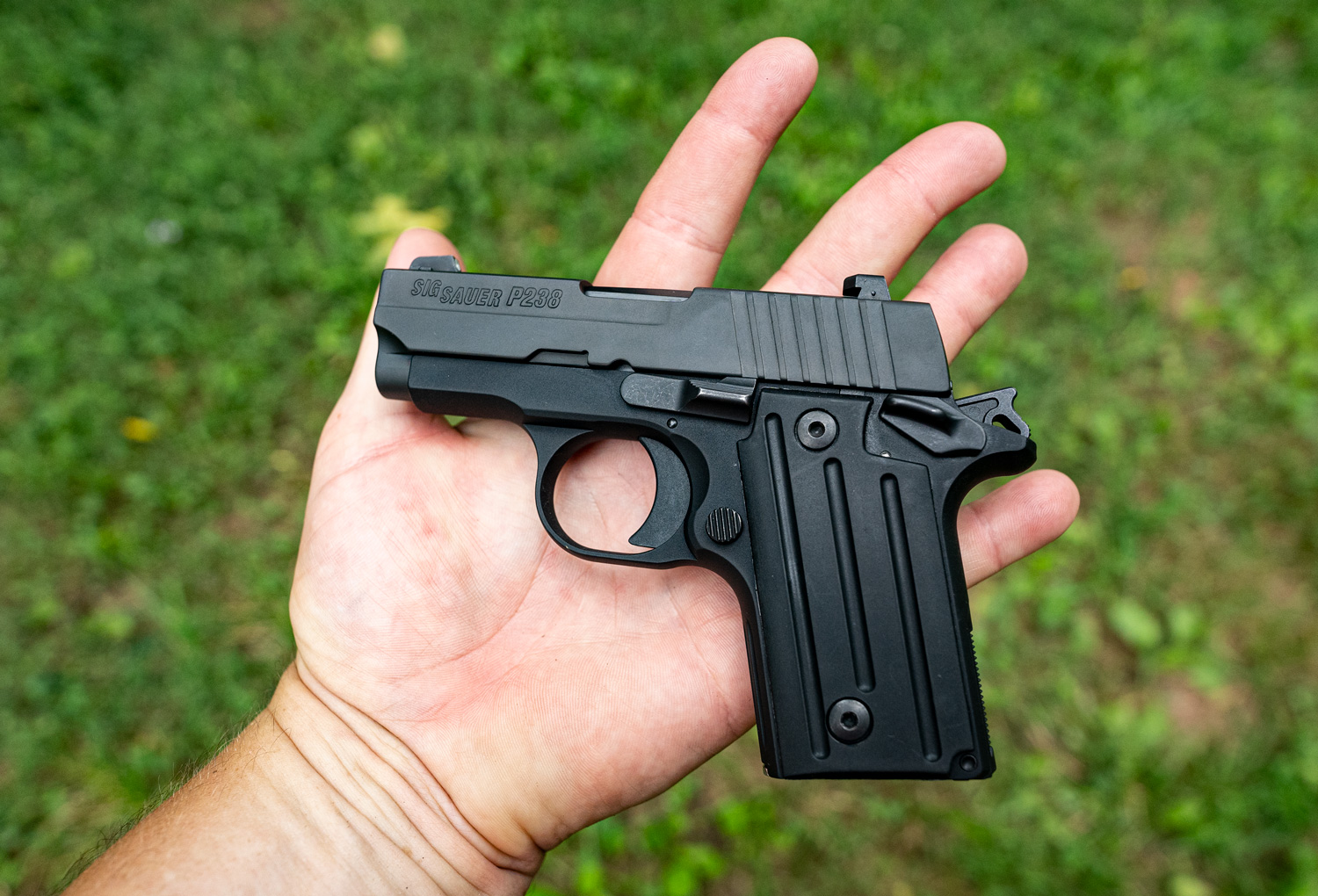
Even smaller and easier to conceal than a compact pistol, sub-compact handguns usually have a barrel length of less than three inches and an overall length of around six inches.
The small size is easy to hide under most loose-fitting wardrobe options. However, these weapons can be more difficult to shoot, especially for extended periods.
Shootability varies greatly in this category. Some models provide easier shooting than others, so you’ll definitely want to give the handguns in this category a test drive at the range if at all possible.
The magazine capacities of handguns in this category are significantly less, with most falling in the 7-10 round range.
Popular sub-compact handguns include the Glock 26, Sig Sauer P239, Smith & Wesson M&P Shield, and the Ruger LCR.
Micro-Pistols
Handguns in this category are the smallest possible pistols. Some are so small, they can fit easily into your trouser pocket. Many shooters choose these pistols as a backup gun or when deep concealment is necessary. The magazine capacity of the average micro pistol is small. Some hold only five or fewer rounds.
Most sub-compact models come in smaller calibers, such as .25 ACP, .32 ACP, and .380 Auto.
Don’t be seduced by the cute little pocket pistols in the display case. Most small guns can be difficult to tame and take a good deal of training to master. Even experienced shooters admit sub-compact handguns are difficult to shoot and produce significant recoil despite the small calibers.
If you are brand new to shooting, it’s probably best to pass over handguns in this category until you gain more experience.
Don’t Rely on Recommendations
Some first-time gun owners simply buy whatever the gun store guy tells them to get. While I have nothing against gun store guys (I’m sure most of them are fine people), many aren’t particularly qualified when it comes to firearms. I’ve overheard some horrible advice handed out over the display case at the local sporting goods store. Don’t forget that his job is to make sales, and he may just be trying to unload unwanted inventory.
Since it’s impossible for beginners to tell the experts from the absolute buffoons, take everything they say with a healthy amount of skepticism.
Some new shooters decide to purchase the same handgun someone they know carries. Perhaps their neighbor by a certain model, and since he seems to know what he’s talking about, they don’t bother trying anything else. They just run out and buy the same gun their neighbor swears by.
Choosing a handgun is a very personal decision. What works well for your 200-pound police officer neighbor may not be the best option for you (especially if you’re a 130-pound woman and a brand-new shooter).
Ultimately, you want a handgun that works for you, since you’ll be the one shooting it, not your neighbor.
Choosing the Right Handgun
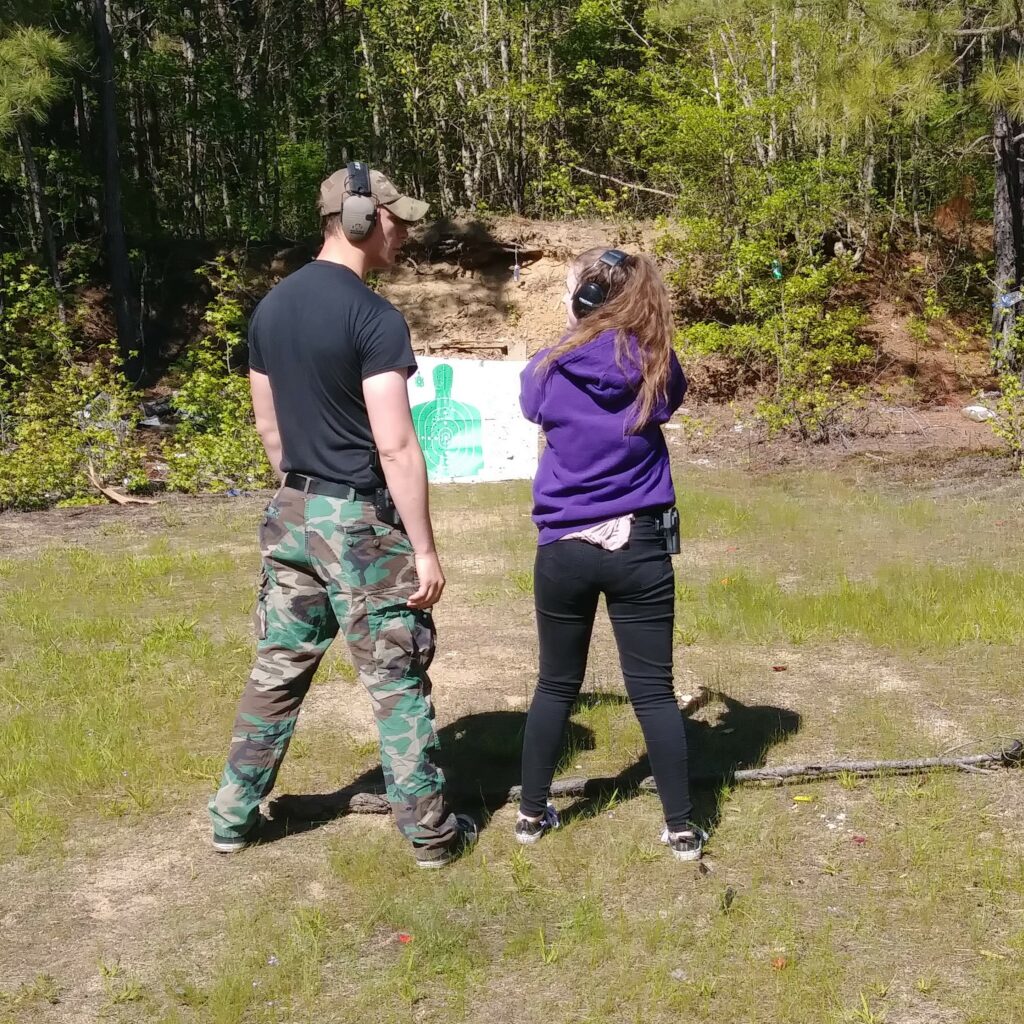
Purchasing a firearm is a major decision, and it isn’t one that should be approached flippantly. Most people would never dream of buying a new car without first giving it a test drive. We even typically try on new pants before we pull out our credit card to buy them. Certainly a new handgun deserves more consideration than a pair of pants.
If you’ve never fired a gun, your first order of business should be to head to the range rather than the gun store. You need to get some experience under your belt before you can even begin to know which handgun will work for you.
The best option is to get some training with a qualified instructor. He or she can help guide you through the basics of shooting form and safety. Once you know how to properly handle and shoot a handgun, you will be better prepared to shop for your own.
Once you have laid a shooting foundation, you’ll want to get some trigger time with as many different models as possible.
Purchasing a Handgun – What to Look For
Handguns are a lot like shoes. There is no one-size-fits all option. Also, there is no one style that fits every purpose.
A guy isn’t going to feel comfortable playing racquetball in his girlfriend’s high heels. Likewise, his small-framed girlfriend probably won’t be happy wearing her boyfriend’s size 12 boots around town while she runs errands.
An effective weapon is one that fits your body and your lifestyle, just like a good pair of shoes.
What to Look For on the Showroom Floor
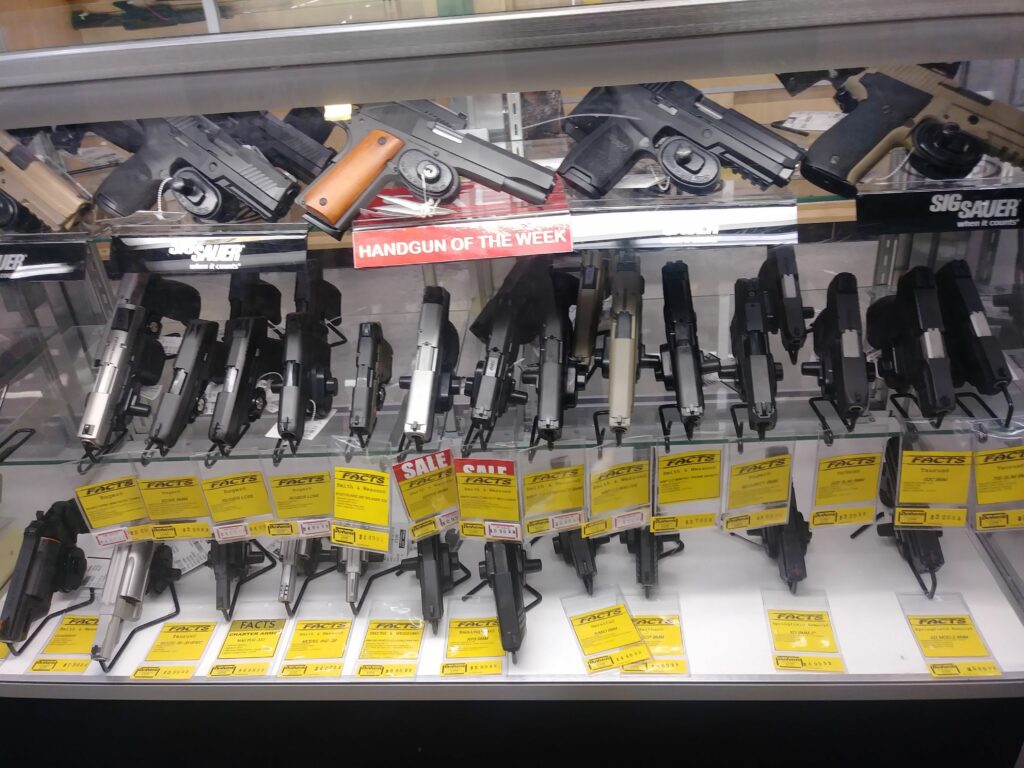
Here are few questions to ask yourself when initially handling a new handgun:
- Do your fingers wrap comfortably around the grip?
- Is the magazine easy to eject while you are holding the weapon?
- Can you pull back the upper receiver and lock it to the rear without excessive effort?
If the answer to any of these questions is no, keep looking until you find something that works.
What to Look for When Shooting
Plenty of people purchase new handguns based solely on how they handled in the showroom. Although some of those people get lucky and fall in love with their new handgun, many will experience buyers’ remorse once they hit the shooting range.
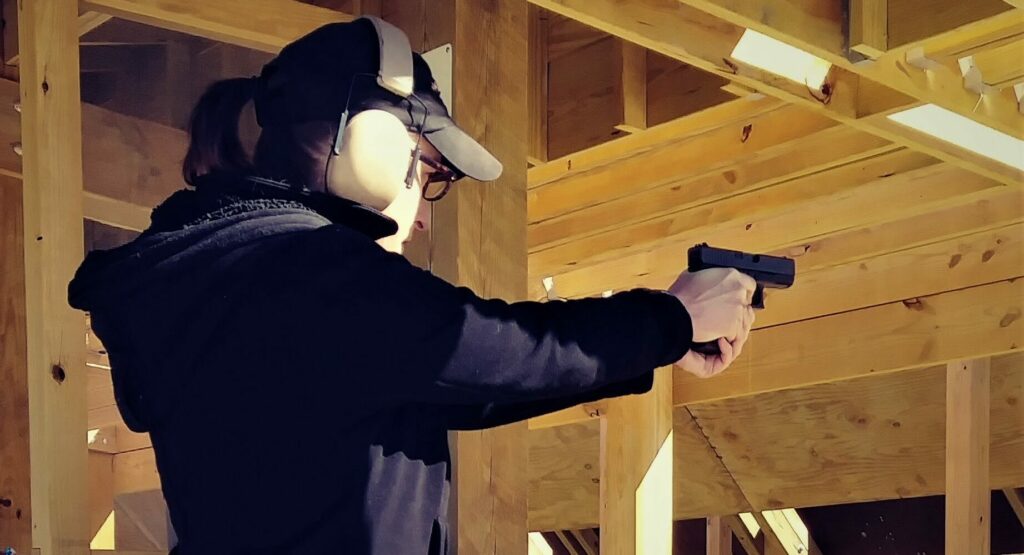
To truly know how a weapon handles, you’re going to need to actually shoot it. Picking a handgun based on how it fits your hand on the showroom floor isn’t enough. You also want to make sure you can maintain a firm grip while shooting. You need to experience the gun’s recoil to really tell how well you can handle the weapon.
If possible, borrow the same model handgun you’re considering from a friend or rent one from a local gun range. Purchasing a firearm without having the experience of shooting it is like buying a pair of shoes without first trying them on. They may look fine in the box, but once you have them on your feet, you might find out they pinch your toes or rub your heels.
If you’re a brand new shooter, you definitely shouldn’t expect feats of marksmanship. However, by handling a few different handguns, you should be able to get a feel for which ones are easier (and more enjoyable) for you to shoot.
If you have a hard time getting rounds on target or the recoil makes you want to cower, then that isn’t the gun for you. Even if your best friend, husband, co-worker, or the showroom salesman says it is the absolute best pistol on the face of the planet, if it doesn’t feel right in your hands when you’re shooting it, find another option.
Best First Pistol Recommendations
-
- Smith & Wesson 380-EZ 2.0
- Glock 17
- Sig Sauer P320
- Taurus G2C
Smith & Wesson 380-EZ
Smith & Wesson’s 380-EZ 2.0 is a great option for a first pistol. At about $400, it’s at a reasonable price point that’s not going to require a second mortgage. The gun itself is relatively lightweight and is chambered for the 380 ACP cartridge. It’s easy to rack too. So, that means frustration free training at the range. This pistol is small enough for concealed carry with a 3.675″ barrel while still offering enough frame to make recoil manageable. With enough capacity to carry 9 rounds, this is an awesome option to get acclimated with pistols.
The biggest downside of the 380-EZ may be the 380 ACP caliber. Some shooters don’t feel 380 ACP is powerful enough for home defense or concealed carry. The good news is, this pistol is also offered in 9mm. Head to the Smith & Wesson website to learn more.
Glock 17
The Glock 17 is one of the most iconic firearms of our generation. Known for its simple design and rugged reliability, there’s a reason Glock is so popular. The Glock 17 is a full-sized frame pistol. This means you’ll get plenty of help soaking up the recoil of the 9mm ammo it fires. With a nearly 4.5-inch barrel, the G17 may be a little large for you to consider it an easy concealed carry option. That said, many do carry the G17 and it also a great option or home defense as it offers a standard carrying capacity of 17 rounds. Typically, you can find a Glock 17 for about $525.
Head to the Glock website to learn more about the G17.
Sig Sauer P320
Sig Sauer offers their P320 in about a dozen different sub-models. For beginning pistol shooters, we’re fans of the P320 Nitron Compact. It has a 3.6-inch barrel, making it a good option for concealed carry while still having enough meat on the bone to help with recoil management. This Sig pistol will run you about the same price as the Glock 17 – $500.
You can get the P320 in several different calibers. For your first pistol, we’d highly recommend you go with the 9mm. 40 S&W and 45 ACP are larger calibers with more recoil. Odds are good you’ll be able to put more shots on target fast with 9×19 and the Sig P320 Compact offers you a magazine with 15-round capacity to help you do it.
Taurus G2C
You can do better than a Taurus for your first pistol, it’s true. But if money is tight, who are we to tell you that you need to take out a loan to buy protection. The G2C is a decent option at just $300 and is a very popular pistol among American shooters.
The Taurus’ 3.2-inch barrel and 12-round magazine capacity put it in “standard” territory among your other 9mm pistol options. We’d push most shooters toward the Smith & Wesson EZ models over the Taurus but if you’re in a financial spot where you have a hard limit of under $300 to spend, you can do much worse worse than the G2C. Head to the Taurus website to see all the available models of G2C pistol.
Final Thoughts
Don’t be afraid to turn down a firearm that doesn’t work for you. It is better to reject an ineffective weapon at the gun store before you find yourself in an actual defensive situation. If the handgun you’re “test-driving” doesn’t feel right, try scaling your firearm up or down until you find a model and caliber you can safely and effectively handle.
There are literally hundreds of handgun options to choose from. While the sheer number of options can seem overwhelming, that means the ideal weapon is out there waiting for you. All you have to do is find it.
Once you’ve chosen your new handgun, the best thing to do is practice. Confidence and proficiency are ultimately your best weapons, no matter which model handgun you opt to buy.

